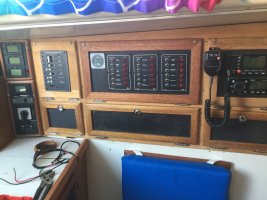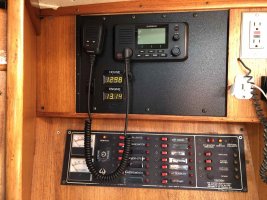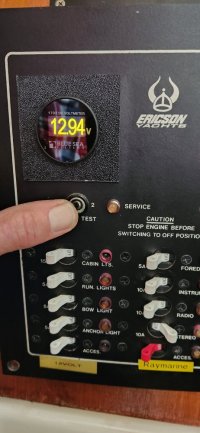I never cared much for the analog voltmeter on my DC panel. All I could ever tell was that the voltage was somewhere between 12 and 12.5, not really yielding much information.
I picked up one of these digital gauges up on Amazon. It was an easy install, but I had to make a round face plate to replace the old rectangular gauge.
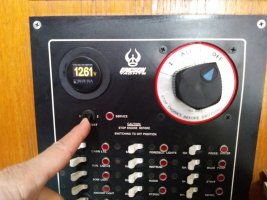
If I had a fancy battery monitor, I wouldn't need it, but that's not in the cards right now. I won't put one of those in until I redo the DC panel. Putting this meter in finally got me to take a look what's behind the panel.
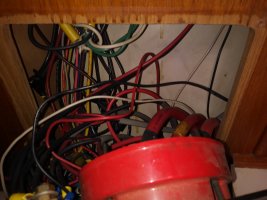
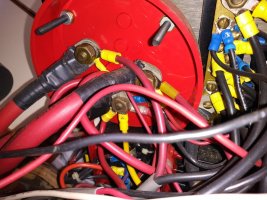
That's going to have to wait until next year. I promised myself no new projects this year--going to try to get some sailing done.
I picked up one of these digital gauges up on Amazon. It was an easy install, but I had to make a round face plate to replace the old rectangular gauge.

If I had a fancy battery monitor, I wouldn't need it, but that's not in the cards right now. I won't put one of those in until I redo the DC panel. Putting this meter in finally got me to take a look what's behind the panel.


That's going to have to wait until next year. I promised myself no new projects this year--going to try to get some sailing done.

